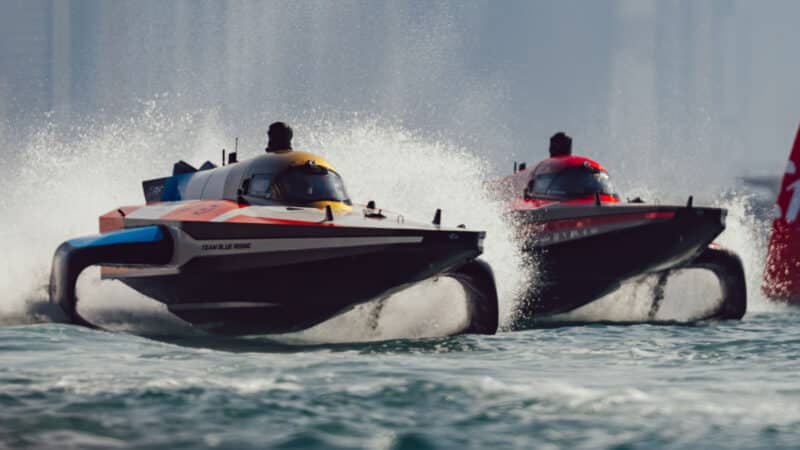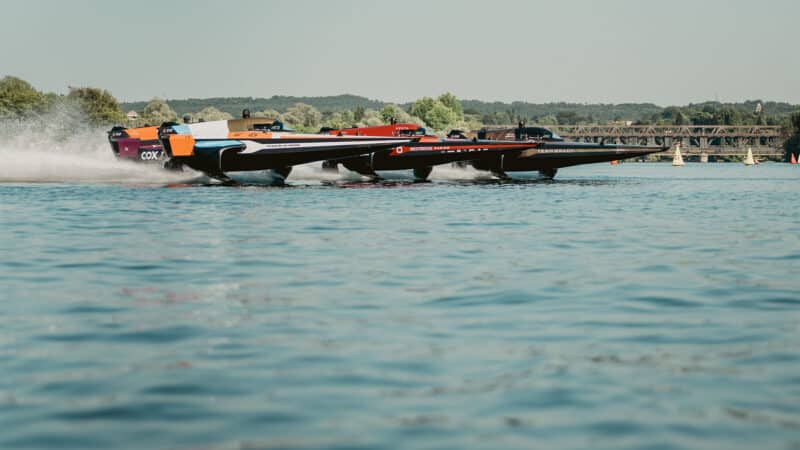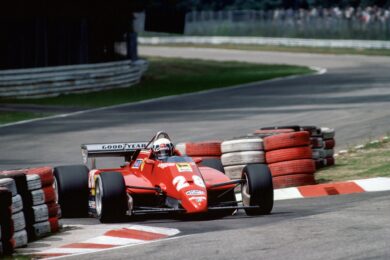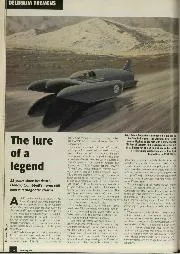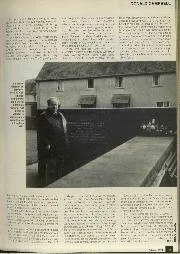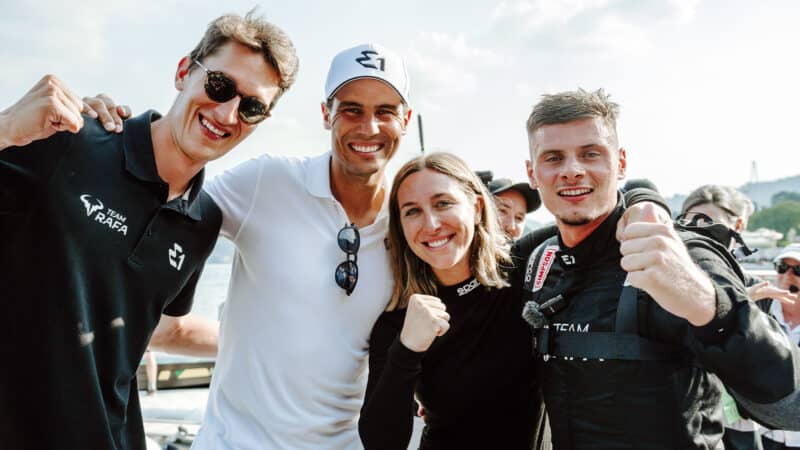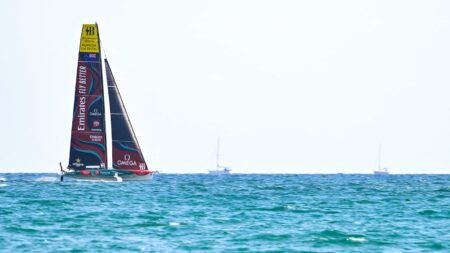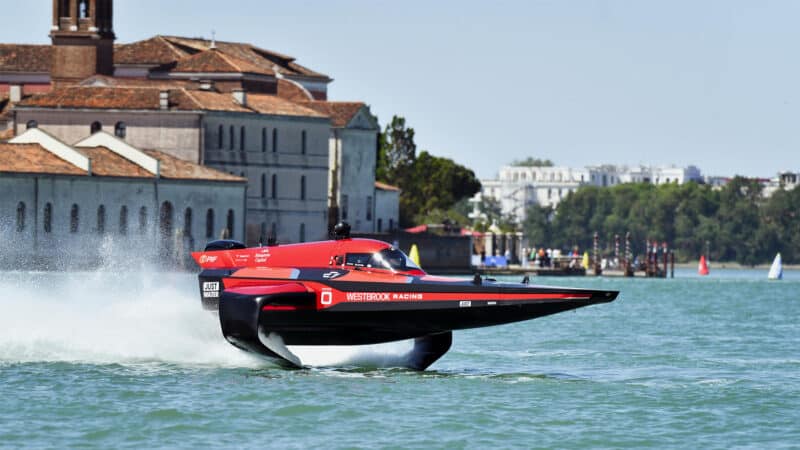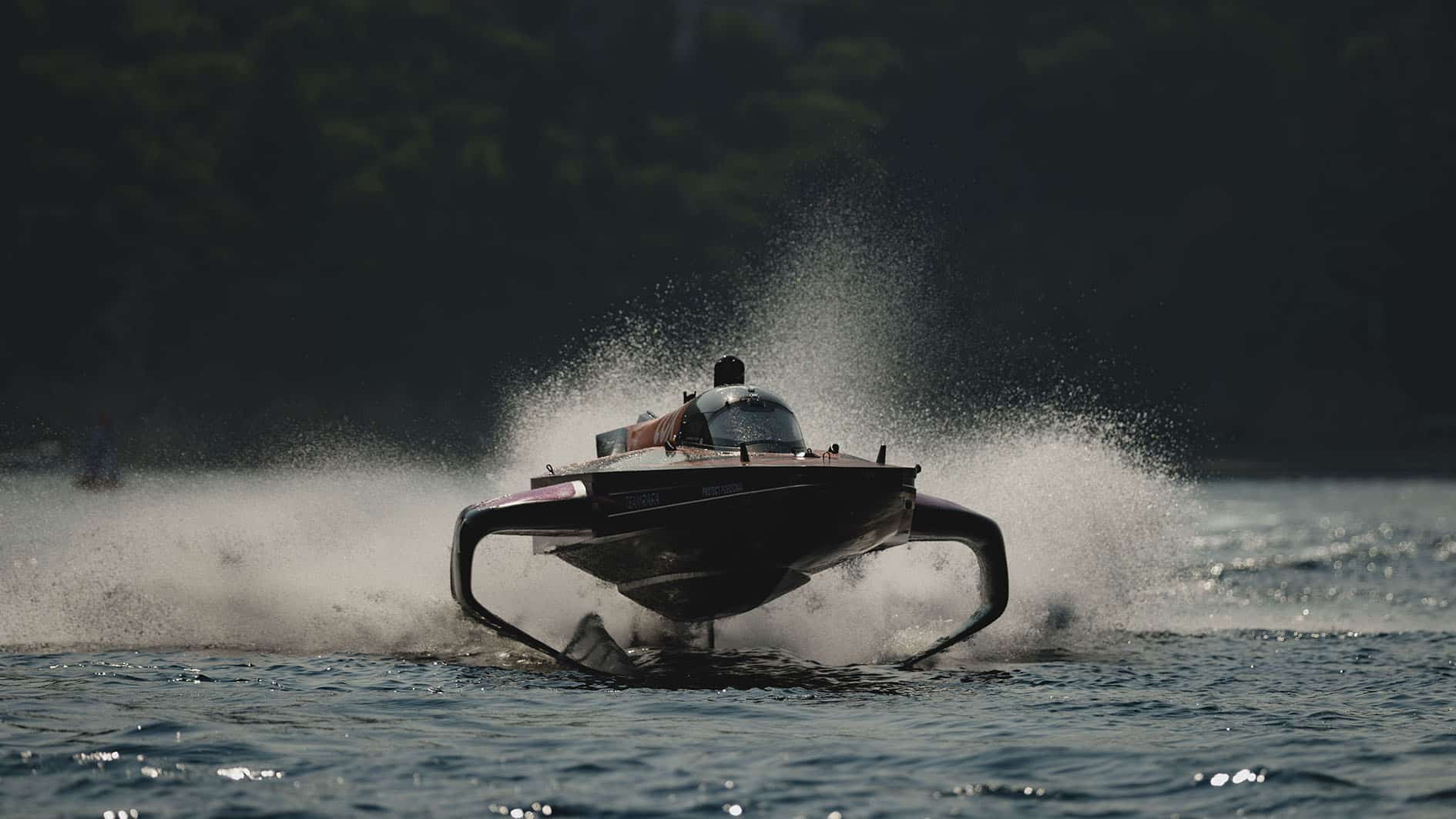Basso knew that Agag was an investor in Sophi Horne’s SeaBird hydrofoil boat, which was being developed to sell to consumers. The Italian believed that her customer vessel could be marketed through a racing championship with a green mission.
“We have a chance to build new revenues, new entertainment and innovate,” he says.
Basso soon secured an exclusive 25-year licence for an electric powerboat racing championship from the governing body UIM, as well as funding from Saudi Arabia’s Public Investment Fund.
“We went pitching to investors,” Basso recalls. “When the PIF heard about this, they said ‘Okay, stop the conversation with everybody else, we want to invest.’”
The former F1 engineer also headed up an in-house technical team – and a selection of outside partners including battery supplier Kreisel and McLaren Applied – which came up with the resulting 150kW (200bhp) electric RaceBird, which can hit a top speed of 50 knots (93km/h / 58mph).
“Sophi’s plan to use the foil the came from the romantic idea of seeing a bird gliding on the water in this nature-driven design approach,” Basso explains.
“There was a massive engineering value behind this. It allowed us to be much more efficient than standard hulls [with less drag and water-resistance on the boat]. The battery weighs less than 20% of the total boat [246kg out of 1100kg].”
The carbon fibre hull was created with the help of Comptech Engineering Ltd, whose senior engineer Phil Cooper worked with Arrows, Jaguar, Renault, Williams and Red Bull in F1.
There are others from the world of grand prix racing too. Joe Sturdy, now co-team principal at Team Brady, was previously Max Verstappen’s trackside power unit engineer at Red Bull. McLaren Applied’s electronic tech was used in putting the RaceBird together.
The interior and steering wheel of the RaceBird looks much like a single-seater – but it hardly drives like one.
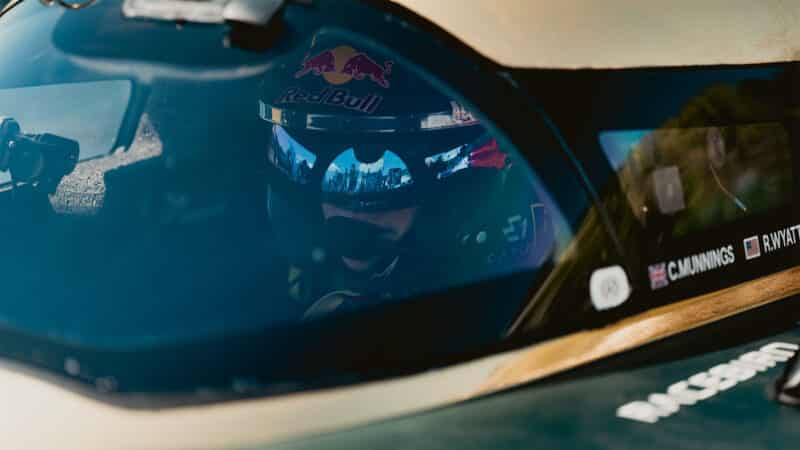
Catie Munnings sits in the Racebird cockpit – not unlike that of a single-seater
E1 / Spacesuit
The boat only hits peak performance when running up on its foils (rather than its hull sitting flat on the water) but it operates on a knife-edge – keeping the vessel skimming the water up high is tough, as current E1 champion and Team Brady driver Emma Kimilainen explains.
“The trickiest thing is probably maximising the performance at every possible corner,” she says.
“The higher you drive the boat, the faster it goes, because you have less drag, but then you have a big risk for cavitation (when the foiling phenomenon fails and the boat hits the water.)
“You’re trying really hard to find the absolute limit, you need to constantly change the settings of the boat and anticipate everything that’s coming.”
Competitors can alter the foil’s angle of attack (known as trim) as well as the ‘outboard’ i.e. how close the hull is to the water. This is particularly pertinent when running in another boat’s wake, with the potential to gain or lose time in these moments being significant.
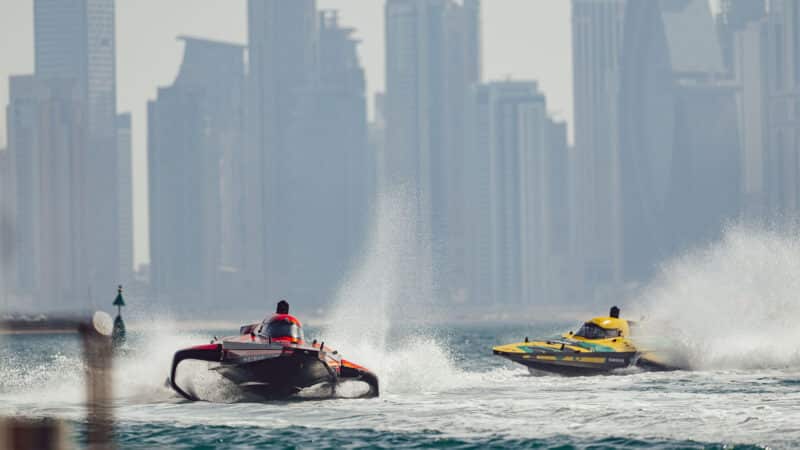
Boats sometimes struggle to race in each other’s wake
E1 / Spacesuit
“It’s been very difficult adjusting,” says Catie Munnings, who’s a rally driver and TV presenter in her day job. “It’s natural to try to be as aggressive as you can, and that doesn’t really work on the boat. It’s about the fine tuning of how to be smooth in the water.”
The sporting format follows one similar to rallycross events, with knockout races and joker laps.
The problem of drivers racing on a surface which is always changing also highlights that it’s sometimes difficult for the boats to race once one is out front, due to challenge of running in another’s choppy wake.
